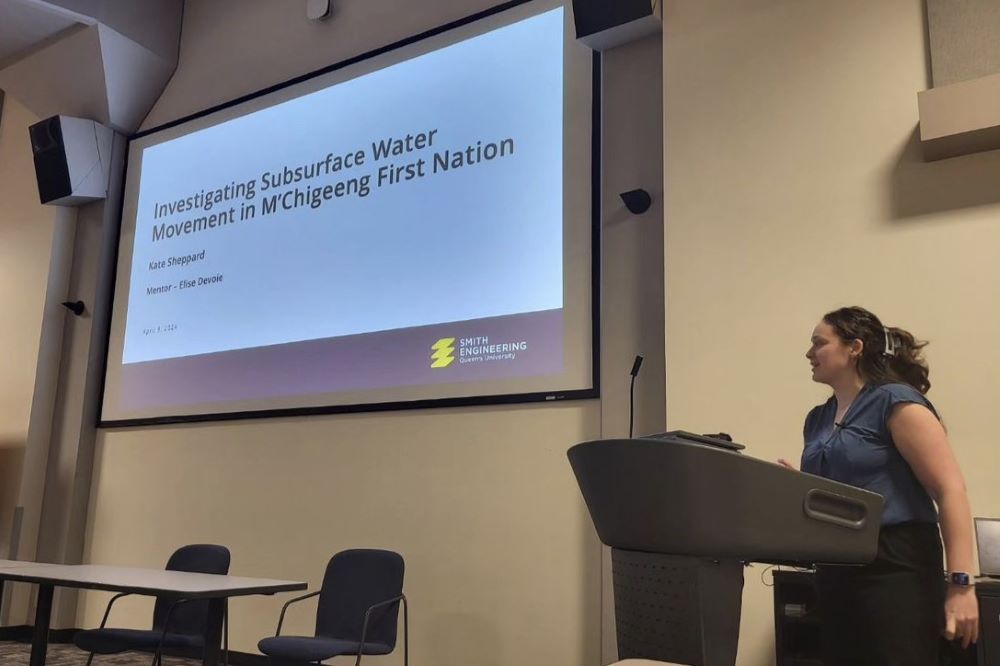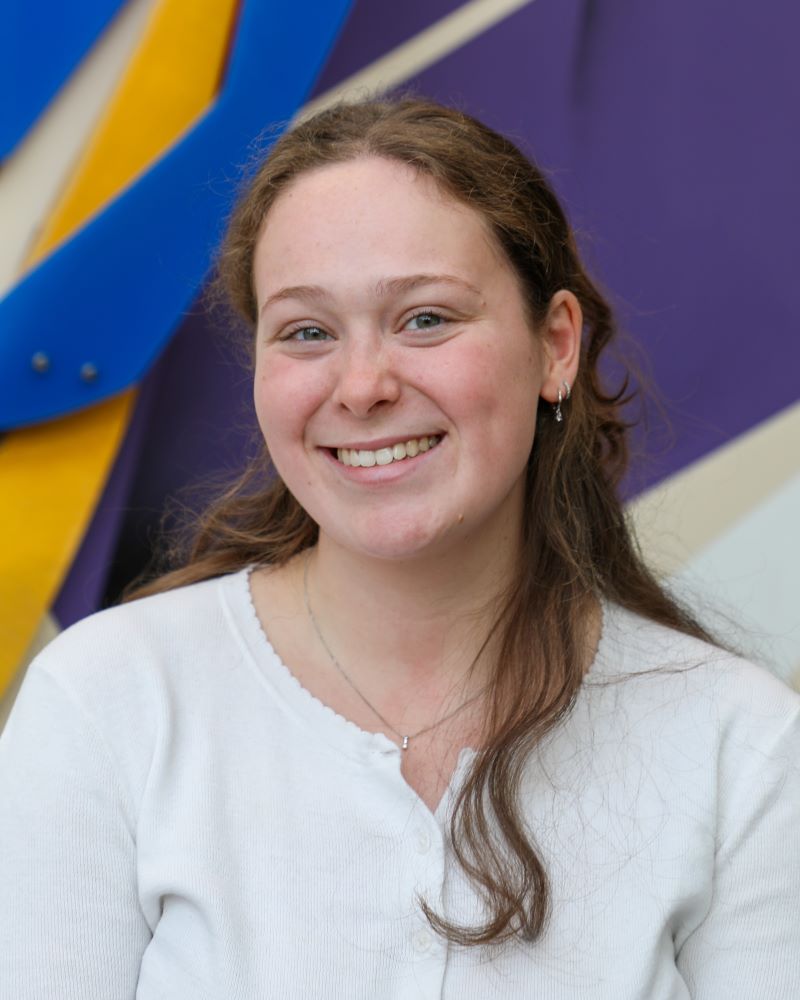
There is a question that third-year Geological Engineering student Kate Sheppard has heard more than a few times now: “So you want to go into mining?”
“A lot of people automatically assume that, because I’m studying Geological Engineering, I must want to go into mineral exploration or mining, but I’ve always been interested in doing something a little bit different,” she says.
That something is water resource management, and to prove it she points to a recent research project she completed through a Queen’s STEM Indigenous Academics (STEMInA) program.
It involved modelling a backup groundwater supply for M’Chigeeng First Nation, where Sheppard is a member. She was one of three students from Smith Engineering this past term to present their research projects to the STEMInA community, which featured participants from the faculties of engineering, health sciences, and arts and science.
A big part of STEMInA involves providing avenues for Indigenous students like Sheppard to explore these kinds of interests. The program was launched in 2021 as an academic support and community-building initiative for Indigenous undergraduates enrolled in STEM-based degrees at Queen’s. It includes programming such as an orientation week for first-year students, services ranging from individual guidance to tutoring, and events like the research presentation day.
For her research project, Sheppard worked with Élise Devoie, an Assistant Professor in the Department of Civil Engineering. Devoie’s research focuses on responsible and productive ways to study hydrology and hydrogeology in cold regions.
Sheppard’s 15-minute presentation walked the audience through a number of geographic information system (GIS) maps she made showing groundwater movement in M'Chigeeng First Nation. She designed the maps using publicly available information. Together they offer a comprehensive model of the area’s subsurface water flows.
“My thought was that maybe this would be useful for a backup water supply because right now they draw from Lake Huron,” she says.
Sheppard returned to M'Chigeeng to present her findings to the community in May at a school workshop event for elementary school students.
Although this project was Sheppard’s first direct experience with STEMInA, earlier this year she joined other group members at the American Indian Science and Engineering Society (AISES) conference in Vancouver. It’s an annual three-day gathering with events and activities for high-school students, post-secondary students, educators, and professionals.
“My favourite part was getting to see other Indigenous students in STEM present their research because it inspired me to do well in my presentation,” says Sheppard.
Overall, she says her experience with STEMInA has been “amazing.”
“It’s just really nice to be able to meet other Indigenous students through the programming and get these kinds of opportunities,” she says. “I’m very thankful that I got to take part in this.”
